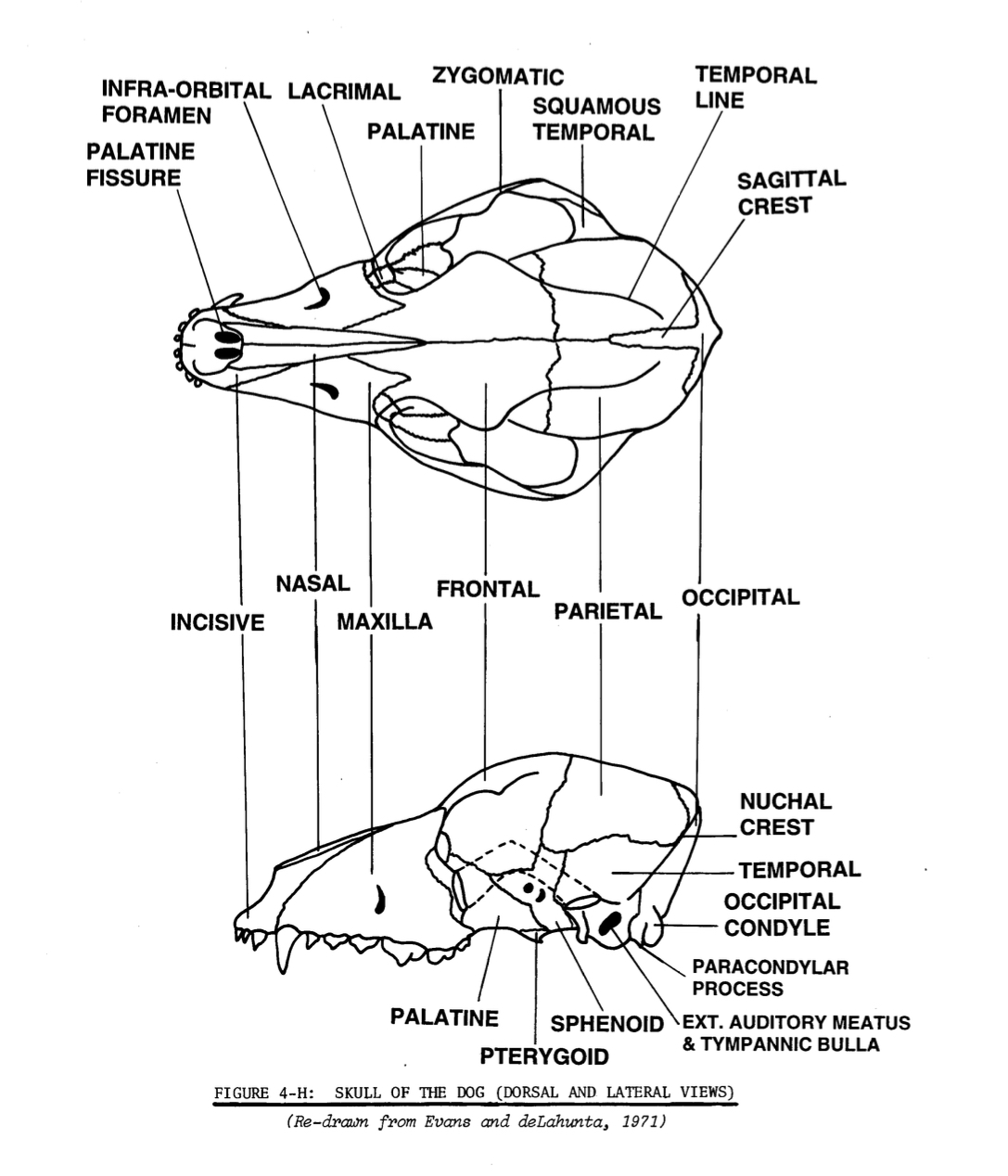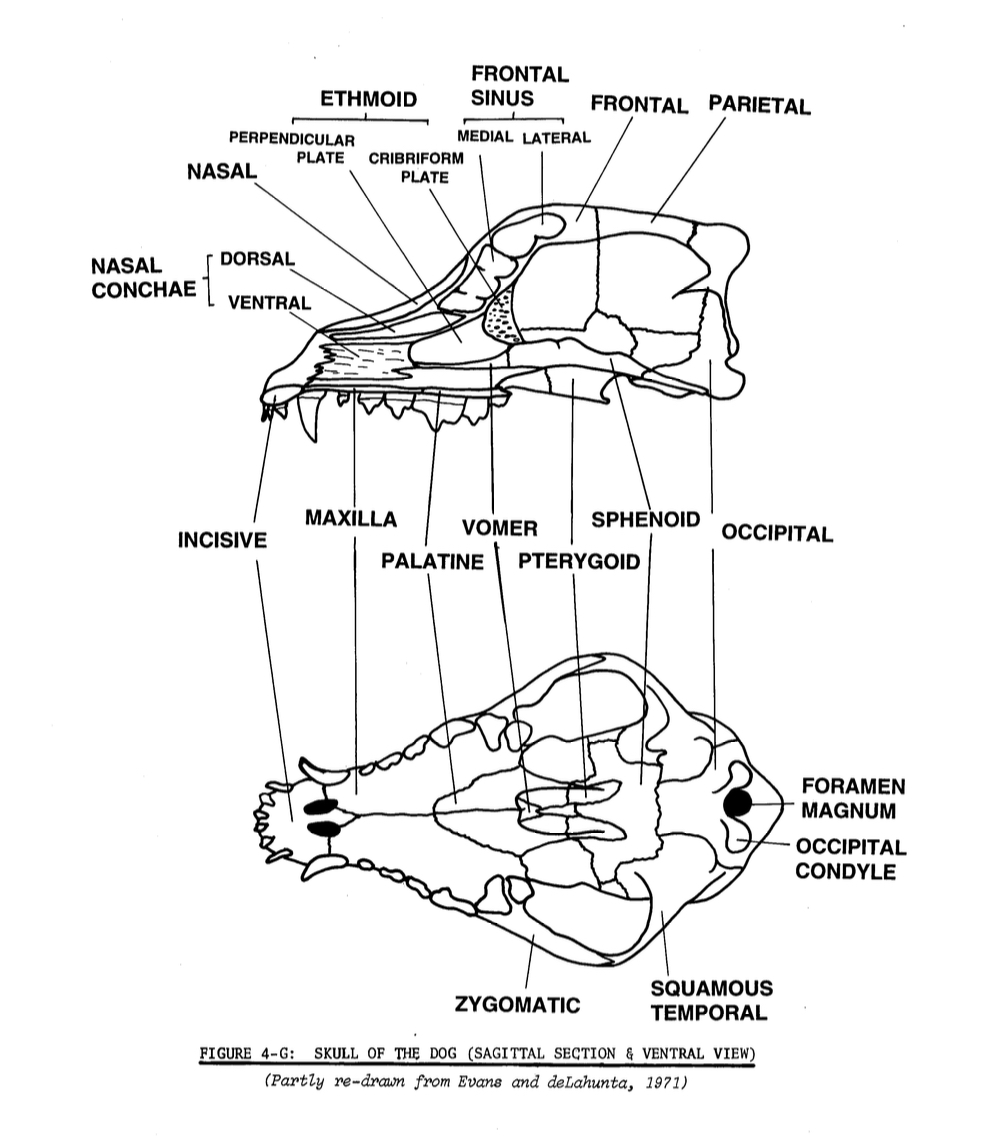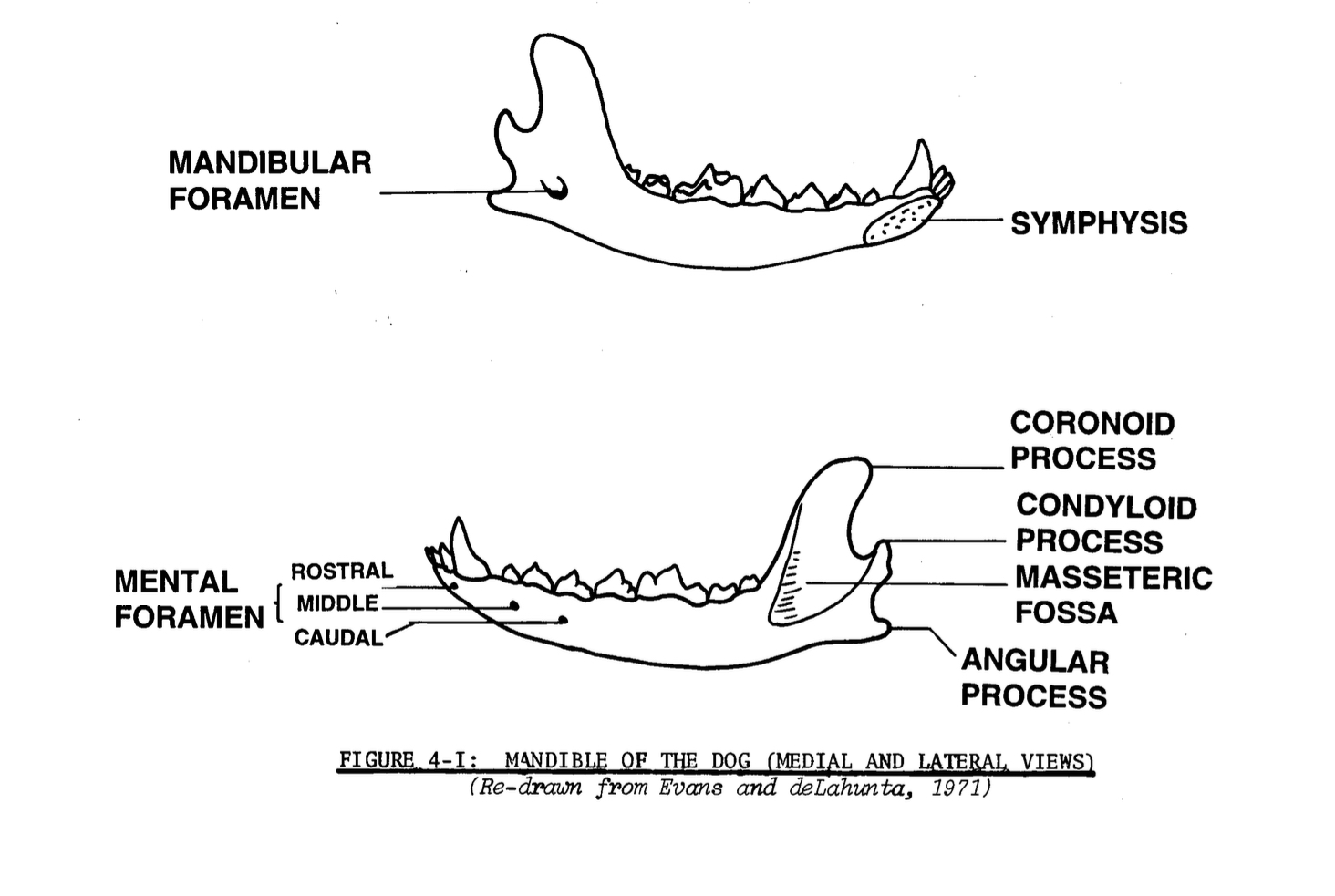Skull anatomy
1/22
There's no tags or description
Looks like no tags are added yet.
Name | Mastery | Learn | Test | Matching | Spaced |
|---|
No study sessions yet.
23 Terms

Cranial bones
Bones that enclose the brain and the organs of hearing.

Facial bones
Bones that form the skeleton of the oral and nasal cavities.

Mandible
The lower jaw that carries the lower teeth and joins at a symphysis.
Hyoid apparatus
A set of bones in the neck that supports the tongue and its muscles.
Foramina
Openings in the skull through which nerves and blood vessels pass.
Maxillae
The principal bones of the upper jaw, carrying the cheek teeth.
Incisives
Bones that form the rostral part of the skull and bear the incisors.
Nasal bones
Paired bones that meet at the dorsal mid-line of the skull.
Palatines
Bones that form the caudal part of the hard palate.
Lacrimal bones
Small bones that form part of the rostral border of the orbit.
Zygomatic bones
Bones that contribute to the rostral part of the zygomatic arch.
Occipital bone
Bone at the caudal end of the skull that contains the foramen magnum.
Foramen magnum
Opening in the occipital bone that conveys the spinal cord.
Nuchal crest
A ridge providing attachment for nuchal ligaments and muscles.
Sphenoid bone
Bone at the base of the cranium that extends laterally into the orbit.
Frontal bones
Paired bones that lie dorsal and rostral to the brain.
Sagittal crest
A bony ridge for muscle attachment, formed by the interparietal bone.
Temporal bones
Paired bones forming most of the lateral surface of the cranium.
Squamous temporal
Part of the temporal bone forming the ventral part of the temporal fossa.
Tympanic temporal
Part of the temporal bone enclosing the middle ear cavity.
Petrosal temporal
Part of the temporal bone that contains structures of the inner ear.
Glenoid cavity
Cavity on the ventral surface of the temporal bone for articulation with the mandible.
Condyloid process
Projection on the mandible that articulates with the temporal bone.